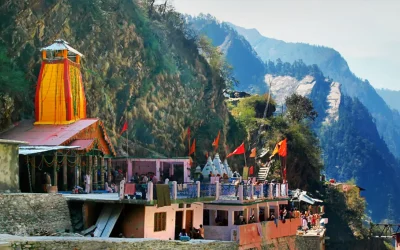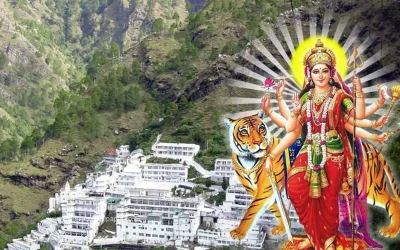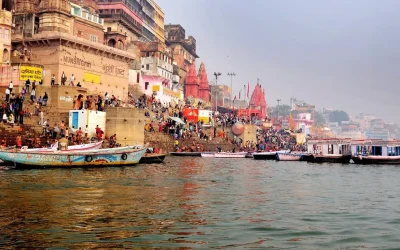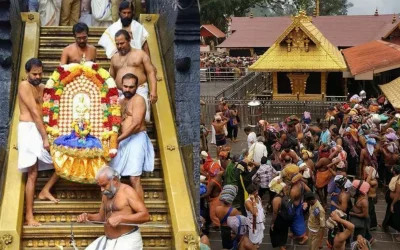History of Airavateshwara Temple
The Airavatesvara Temple is a testament to the grandeur and magnificence of ancient Indian architecture, a timeless marvel that transcends centuries and leaves visitors in awe with its sheer beauty and intricate craftsmanship. Nestled in the quaint town of Darasuram, near Kumbakonam in Tamil Nadu, this architectural gem is not merely a place of worship but a journey back in time, offering a glimpse into the rich cultural heritage of the Chola dynasty.
Constructed in the 12th century CE under the patronage of the illustrious Chola king Rajaraja Chola II, the Airavatesvara Temple is dedicated to Lord Shiva and derives its name from ‘Airavat,’ the divine white elephant of Lord Indra. Alongside the Brihadeeswara Temple at Thanjavur and the Gangaikondacholeeswaram Temple at Gangaikonda Cholapuram, it forms the trio of ‘Great Chola Temples’ recognized as UNESCO World Heritage Sites, attesting to its historical significance and architectural brilliance.
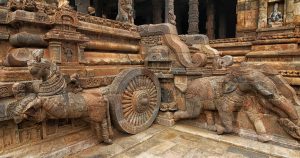
Stepping into the temple complex, one is immediately struck by the intricate carvings, majestic sculptures, and aura of spirituality permeating the air. Built in the distinctive Dravidian architectural style, the temple’s main structure resembles a majestic chariot, a symbol of divinity and power. Every inch of the temple is adorned with elaborate carvings depicting scenes from Hindu mythology, narrating tales from the ancient Indian Puranas with unparalleled detail and precision.
One of the most captivating features of the Airavatesvara Temple is its exquisite artwork, which is nothing short of poetry etched in stone. From delicate sculptures of deities and celestial beings to vibrant paintings adorning the walls, every aspect of the temple exudes a sense of divine splendour and artistic mastery. The intricate craftsmanship is a testament to the skill and dedication of the artisans who laboured tirelessly to bring this architectural marvel to life.
The musical steps stand out as a true marvel of ingenuity and creativity among the many wonders housed within the temple complex. Carved with meticulous precision, these seven singing steps leading to the altar represent the seven musical notes, captivating visitors with their melodic resonance and enchanting beauty. It’s a testament to the ancient Indians’ deep understanding of art and science, creating an experience that transcends mere sight and resonates with the soul.
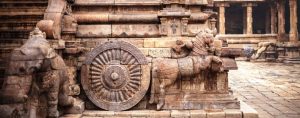
Visiting the Airavatesvara Temple is not merely a sightseeing excursion but a spiritual journey, a chance to connect with the divine and immerse oneself in the rich tapestry of Indian culture and heritage. As one traverses the hallowed halls and explores the sacred precincts, each step unearths a new layer of history and significance, leaving an indelible mark on the heart and mind.
In conclusion, the Airavatesvara Temple stands as a timeless testament to the ingenuity and creativity of ancient Indian civilization. It is a beacon of spirituality and artistry that continues to inspire awe and reverence to this day. Its exquisite architecture, intricate carvings, and spiritual significance make it a must-visit destination for anyone seeking to experience the rich cultural heritage of Tamil Nadu and the enduring legacy of the Chola dynasty.

